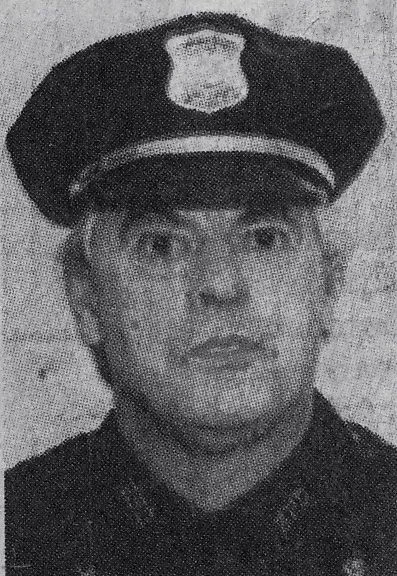1993: Murder and Investigation
Detective John Mulligan
The murder
Fifty-two-year-old Boston Detective John Mulligan was shot five times in the face just before dawn on Sunday, September 26, 1993, as he slept in his Ford Explorer outside an all-night Walgreens drugstore in Boston's Roslindale section. Someone either fired through his slightly open driver's window or climbed into his passenger seat to make the kill. No windows were broken, and no one heard the shots. Observers discerned a cross-like pattern in the bullets.
"There were some elements that would lead one to describe it as execution-style...an assassination," said Boston Police Commissioner William Bratton. It sure looked personal, pundits agreed. "A message."
Who would fire that many shots at a sleeping, uniformed policeman?
A 27-year veteran of the force, Mulligan had a rough policing style that earned him scores of enemies and multiple lawsuits for false arrest and citizen brutality. He was one of a "handful of officers with the largest number of civilian complaints against them." The year before his death his department officially branded him a "problem officer."
Investigators shone a bright light into Mulligan's police work, looking for individuals bent on revenge.
Random crime
To the public's surprise, within days the police dragnet turned up two teenagers from adjacent Boston neighborhoods, Terry Patterson, 18, of Hyde Park, and Sean Ellis, 19, of Dorchester. The authorities re-framed Mulligan's brutal assassination as a random crime of opportunity, committed when the youths saw the detective sleeping and decided to steal his gun for a trophy.
Many observers were skeptical: Was a gangland-style execution a teenage MO? Would teens kill a uniformed officer on a motive so whimsical? Was the killing truly random, given the victim's scores of enemies ?
Suspicious police conduct
Detectives Kenneth Acerra (L) and his partner, Walter Robinson, lead Sean Ellis to jail after his October 1993 arraignment. Both detectives were then accused -- by prosecutors and defense lawyers alike -- of mishandling evidence and witnesses in the Ellis case.. . (Boston Herald photo)
After Patterson and Ellis's arrests, allegations hit the press of possible investigative misconduct in the Mulligan homicide investigation. Astonishingly, the suspicions came from the chief prosecutor in the case, Suffolk County Assistant District Attorney Phyllis Broker.
Broker questioned two police actions:
First, John Mulligan's friend and colleague, Detective Kenneth Acerra, claimed he "found" Mulligan's stolen cell phone – a full week after the murder – in the center console of the detective’s Ford Explorer. Like Mulligan’s service revolver, the phone had been deemed stolen after crime scene investigators swept the vehicle and didn’t find it.
Acerra claimed he came upon the phone while was looking for a cell phone charger in the impounded SUV. The police department alternately claimed (a) crime scene technicians somehow missed the phone, and (2) technicians found the phone but didn’t deem it important enough to note on their inventory.
It all strained credulity.
A second questionable incident also involved Acerra, this time with his longtime partner, Detective Walter Robinson, and their close associate, Detective John Brazil. Within twelve hours of the murder, the three detectives brought forward as a witness nineteen-year-old Rosa Sanchez. The teen claimed that while shopping for a bar of soap at Walgreens at 3 a.m. she saw a young African-American man peering into the window of the sleeping Det. Mulligan’s vehicle.
Coincidentally, Rosa Sanchez was the niece of the woman Acerra lived with, a cousin to their child.
On October 5, 1993, Sanchez identified Sean Ellis from a police photo array containing eight images, but only after homicide detectives gave her two separate tries to make the identification. In her first pass through the photos, she selected a different man -- neither Ellis nor Patterson. (It was the same photo her husband, Ivan Sanchez, selected a few days earlier, when shown the same photos; he’d rated his certainty a “7 out of 10.”)
Rosa Sanchez was then escorted out of the building by Acerra and Robinson, who’d driven her to the station that evening. She sat for a while with her "Uncle Kenny" and his partner, Walter Robinson, in Acerra's private car. By all accounts she was weeping.
Five minutes later, Acerra and Robinson ushered Rosa Sanchez back into homicide, saying she’d “changed her mind. “ Shown the unchanged photo array a second time, Sanchez immediately pointed to Sean Ellis's photo in the top, left corner.
The cell phone incident and the unorthodox photo-identification session didn’t sit well with Chief Prosecutor Phyllis Broker. She removed Acerra from Mulligan the task force, raising the ire of the powerful Detectives Union. Broker then required both detectives to answer questions on tape about their roles in Rosa Sanchez’s two-try identification procedure.
The Detectives' Union strongly and publicly objected to Broker's actions as "harassment" of Dets. Acerra and Robinson. A feud erupted between Boston Police and the DA's office, making headlines. According to the Boston Globe, Boston Police Commissioner William Bratton called in Prosecutor Broker and told her that if she wanted to keep her job, she must cease all questioning of Acerra and Robinson.
Broker complied and stayed on the case.

